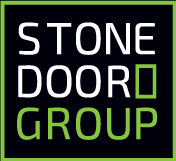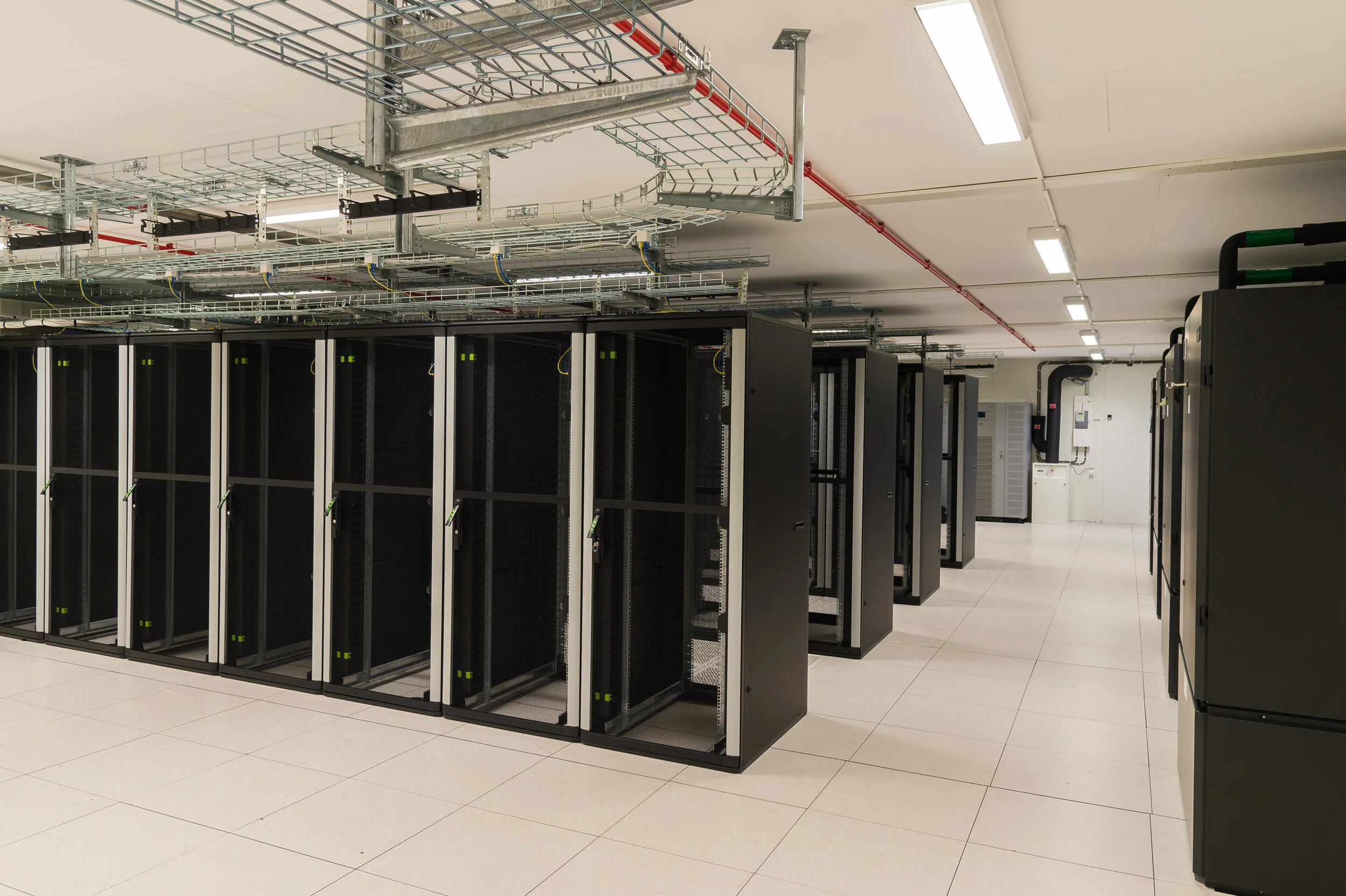This demo shows how an IT team can migrate workloads to Red Hat OpenShift running on Nutanix. The demo will show how to install, configure, and manage OpenShift on Nutanix plus get a sample “Hello World” application running.
With organizations in a push to embrace the cloud, hyper converged infrastructure (HCI) computing has burst into the mainstream. The market is expected to grow at more than 26% year on year from its 2020 position of $7.34bn to $48.17bn by 2028.
If you’re looking to make Ansible work for Windows management, our handy guide takes you through each of the necessary steps.
This demo will show how Ansible Automation and Dynatrace can be used together to automatically detect and remediate change-induced service outages. In addition, the demo will show how the solution can be tied to an incident management system, in this case, ServiceNow.
ISVs go through great lengths to build Value Added Reseller programs through training, workshops, conferences, trial software, and training. We are voracious consumers of Red Hat partner enablement. The VAR channel is how most customers get access to enterprise software. We in the VAR channel owe it to our customers to be honest, build a long term relationship and care.
This demo covers how to create a new development environment, set up a pipeline in OpenShift to deploy the application, and show the capabilities of Ansible beyond provisioning infrastructure, including managing operating system configuration items.
This demo takes a look at Ansible Automation for Red Hat and its capability to automate and orchestrate several provisioning and Day 2 configuration administration tasks.
View our latest webinar aimed at Java developers on how to migrate legacy applications via the Red Hat® OpenShift® Container Platform (OCP).
In this webinar Java developers will learn how to set up OpenShift on IBM Cloud to migrate their legacy applications.
Businesses are waking up to the opportunity and importance of digital transformation and how RedHat can help them deliver. However, a lack of familiarity with the full suite of products means they may not be getting the best out of it.
Businesses increasingly use technology to improve the performance of IT service desks. However, many are still not packing the kind of punch businesses need. To create systems which really deliver, businesses need to add a pinch of automation.
Here are 3 problems with conventional approaches which could push you to automate your service desk.
If you’re a developer using CentOS, Red Hat’s announcement that they are removing support this year, may leave you wondering which way to go. CentOS Streams offers a replacement, but it’s a very different—and less stable—animal. A better option would be to go with Red Hat Enterprise Linux (RHEL).
Local governments are being asked to operate on increasingly tight budgets. New systems to reduce asset management waste could be a godsend.
In a fast paced digital world, speed and quality is everything. Solutions which can help businesses with their digital transformations are worth their weight in gold.
Agility is everything in the digital world, with businesses striving to bring new products to market in the fastest and cheapest way possible. Azure Red Hat OpenShift could be the answer.
Is your business prepared in the event of a ransomware attack or natural disaster? Implementing a Business Continuity and Disaster Recovery plan is critical. Here are 3 steps to make sure your business is prepared to respond instead of crippled.
Not everyone is cut out to become an independent consultant, but if you’re willing to do what it takes, the rewards far outweigh the risks to make the leap.
Part 3 of our three part the series on Deploying Quay and Clair in OpenShift on AWS. This final part takes you through the steps required to deploy Quay Container Registry and the Clair security scanner in our Openshift Cluster running on AWS public cloud.
In our previous post we discussed the business case for using Red Hat Quay as our container registry and Red Hat Clair to scan the images in Quay for known security vulnerabilities. We then configured AWS resources that are required to support Quay and Clair running in an Openshift cluster deployed in AWS public cloud infrastructure.
In this, part 2 of our three part series, we will deploy our Openshift cluster on AWS
This three part series is an update and a continuation to Stone Door Group’s previous Quay and Clair blog posts.[Securing Containers with Red Hat Quay and Clair Part 1 & Part 2]
In this series we will explore the new process of deploying Red Hat Quay and Clair in a Red Hat Openshift 4.X cluster running on AWS public cloud. The steps to install Openshift 4.X are significantly different than the steps required to install Openshift 3.X. The business case for using Openshift, Quay and Clair have not changed.
Great tutorial on how to boost productivity with container management using Docker Compose.
Many state agency systems are in desperate need of an overhaul, with many agencies having old and antiquated systems, which are no longer fit for purpose. In this article we cover 3 key considerations for state agencies looking to re-platform their systems and migrate to hybrid cloud.
Working remotely in this COVID environment has posed many challenges. Here are 3 time management tools (plus a bonus) that should help keep you focused and boost productivity.
We discuss 4 #myths about Docker and containerization and why the facts point to Docker and containers as a top choice for Hybrid Cloud solutions.
Thinking of implementing SAP HANA and looking around for the best Linux operating system to do so? Here are 3 Key Reasons Red Hat’s RHEL 8 (Red Hat Enterprise Linux 8) should be top of your list of considerations.
Companies with a strong analytics culture are over twice as likely (48% vs 22%) to significantly exceed business goals than those without. Here are 3 Reason to use SAP HANA to accomplish that.
The goal of this session is to show how to deploy a secure and scalable image repository using Red Hat Quay and Clair on OpenShift on AWS.
This series is intended for developers, application owners, and operations professionals that want to migrate Java applications to OpenShift and leverage the capabilities of Red Hat OpenShift Service Mesh.
Helm is critical to deploying Kubernetes native software. Here are a few tips and tricks to give you an edge on your Helm implementation.
3 companies who we believe are pioneers in Site Reliability Engineering.
This webinar provides the knowledge and know-how for migrating an existing application from MulesSoft to Red Hat® 3Scale on OpenShift®.
Site Reliability Engineering is key to Digital Transformation. Here are the top 3 benefits of SRE.
Helm charts makes deploying apps in Kubernetes easy. Here is a quick tutorial to get your first app running.
AWS Fargate makes greenfield cloud native application development easy. Here are a few reasons why you should consider it for your next application.
Digital products create data at speeds unimaginable 5 years ago. Google Cloud Platform's "Big Table" product provides near infinite scale for modern apps, IoT devices, and AI platforms. Here are some of our favorite Big Table use cases.
Cloud Paks marry the scalability of OpenShift with the reliability of IBM software into an easily deployable package. We are fond of Multicloud Manager (MCM). Here are reasons why you should be too.
In this webinar we discuss how to migrate your existing Java applications into containers and build DevOps enabled CI/CD pipelines to test and deploy your applications.
The pandemic has forced enterprises into almost overnight application modernization. IBM Cloud Paks were designed to simplify application refactoring and transformation. Here are a few reasons why Cloud Paks work for IBM customers.
This demo shows developers how to pull a legacy applications through a complete digital transformation to OpenShift.
Serverless computing offers businesses flexible scaling, improved stability, and reduced costs. It also gives developers the flexibility to work with the coding language they are most comfortable with. Over the last few years, there has been an increasing use of serverless computing as more businesses come to realize its benefits, and this adoption is likely to continue to grow.
The advantages of Kubernetes are manifold, including improved productivity, scaling, automation and configuration. And there are other benefits too. In this article, we’ll focus on three ways that Kubernetes reduces cloud complexity.
This article outlines why APIs have become a key component to digital transformation in recent years. We discuss some of the challenges with API integration, and show why Red Hat 3scale API Management is the ideal solution for companies seeking to manage their APIs.
In this webinar we show Windows administrators how to effectively manage day 2 operations and compliance of RHEL servers using Red Hat management software. We discuss the Red Hat equivalents to Windows day 2 operations, automation tools and best practices for integration.
This webinar shows how to quickly port fragmented automation built on shell commands or open source tools onto a single Red Hat Ansible framework. Through real world examples, we demonstrate how to design an Ansible architecture, implement the right security controls, and write playbooks that anyone can update.
This workshop shows Java developers how to set up OpenShift on IBM Cloud to migrate their legacy applications. We discuss how to provision instances of OpenShift and set up all the required infrastructure to host new applications including networking, service mesh, storage, and IAM considerations. The labs cover how to setup OpenShift projects and leverage services to host your legacy Java application code.
Red Hat OpenShift Container Platform delivers a ready-to-go container orchestration infrastructure and migration blueprint for you to rapidly transform and modernize legacy applications. This webinar shows how legacy .NET applications that no longer scale on old or EOL'd platforms can be migrated to OpenShift.
This is part 1 of a three-part webinar series of 1 hour workshops on the best practices on how to implement Red Hat's core technologies: Red Hat Satellite, Red Hat Identity Manager, OpenShift, and Ansible.
This demonstration shows administrators how to quickly lift and shift .NET Core applications from legacy systems to Red Hat OpenShift and setup simple CI/CD pipelines to promote application code to production.
This webinar session is designed for administrators looking to gain an edge in their Kubernetes implementation. Topics include implementing RBAC for kubectl, maintaining your container environments via garbage collection, managing resources via cpu and memory limits, and other quick tips to run an efficient Kubernetes cluster.
Our third of a 4-part series of Webinars geared at various DevOps topics to sharpen your Docker and Kubernetes skills.
“Docker Tips for Better Productivity” demonstrates ways administrators can gain an edge in their Docker administration. Topics include building efficient and lightweight containers, optimizing Docker networking, and ways to leverage the Docker API for automation.
If you have Windows and Red Hat servers and don't know what to do next, here is a free recorded hands-on demonstration to get you started. #RedHat #Windows
If you need to transition #Docker from a PoC to an enterprise platform, check out our recorded webinar on how to do it in 1 hour.
Personal insight from one of Stone Door Group’s founding partners, Darren Hoch. “Having survived the crashes of 2001 and 2008, I enter 2020 bullish on the long term prospects of business and humanity.” This blog dives into some of the important lessons and takeaways we can apply to the current COVID-19 environment.
Docker containers form the basis for modern application deployment. Here are some productivity tips for effective container management.
Digital Transformation or "DX" is at the peak of buzz worthiness in 2020. Here are 4 technical trends we see that are driving DX across the enterprise.
We are nimble, decentralized, and largely remote. Everyone is empowered to find their own max efficiency. Here are some tips to work smarter and get stuff done for remote workers.
Kubernetes has become the orchestrator of choice for enterprises. Here are some quick tips to be more productive with #K8s. #DevOps
Serverless computing simplifies with Functions as a Service (FaaS). Here are 3 reasons to consider it for your next app.
Got cloud sprawl? Here is a quick tutorial on how to use Ansible to discover and manage AWS EC2 instances. #ansible #aws #devops
Ansible replaces silos of IT automation. Here are 3 companies who have successfully performed an Ansible migration.
Implementing #DevOps sounds intimidating. It's not. Here are 4 misconceptions that prevent enterprises from starting their DevOps journey.
Stone Door Group is an IBM and Red Hat Apex Partner. We get OpenShift. We get IBM Cloud Paks. Here are 3 reasons why IBM customers should consider a move to IBM Cloud Private on OpenShift.
Stone Door Group helps customers choose the best hybrid cloud solutions to support their digital transformation initiatives. Here are 3 considerations when choosing a hybrid cloud architecture.
DevOps is a journey that starts with a mindset and ends with effective processes and tools that accelerate digital transformation and significantly reduce cost. Here are a few ways DevOps can save your organization some money.
OpenShift is at the core of banking digital transformation. Here are a few real success stories.
Stone Door Group is an IBM and Red Hat partner. We install OpenShift on IBM Cloud. Here are 3 reasons why IBM cloud has never been better.
Stone Door Group is a results driven solutions integrator. We love industry case studies. Here are 3 BI ones we found very interesting.
While BI and Analytics have been around for decades, buzzwords come and go. Here are some BI buzzwords making the rounds in 2019.
Here are 3 companies that implemented smart IoT solutions that enhanced the productivity and efficiency of their existing business process.
DevOps is often considered a "journey". Here are 3 examples of companies who found digital transformation at the end of theirs.
Stone Door Group experts to speak on a variety of cloud, DevOps, and open source topics including challenges of cloud migration, building serverless infrastructure, and implementing effective cloud security.
Red Hat OpenShift simplifies digital transformation. Here are 3 companies that are using OpenShift to rapidly adapt to a digital economy.
Microservices make up the core of a good digital transformation strategy. IBM Cloud Private provides a comprehensive set of microservices for both greenfield apps and monolithic apps in need of refactoring.
Stone Door Group is an early adopter of Red Hat OpenShift. Here is a part 2 of a 2 part series on how to implement the Clair and Quay CoreOS components into OpenShift for optimal container security.
Stone Door Group is an earlier adopter of Red Hat OpenShift. Here is a part 1 of a 2 part series on how to implement the Clair and Quay CoreOS components into OpenShift for optimal container security.
We help customers develop practical blockchain prototypes. Here are examples of enterprise blockchain projects in production that we find very interesting.
Stone Door Group has developed a comprehensive security blueprint for CIOs looking to deploy containers as part of their digital transformation strategy. #docker #kubernetes #digitaltransformation #devops
There is a lot of buzz around how AI and ML could change our future. Here are 3 examples where AI and ML are changing what we do today.
Retaining employees saves time, money, and opportunity cost. Here are some ways BI can help keep people on your team.
Stone Door Group has taken 100K+ hours of container orchestration experience and created a comprehensive blueprint for CIOs.
Stone Door Group will add their expertise and knowledge to the discussion around container security on the cloud.
With the strategic acquisition of Red Hat, IBM will deliver fully integrated hybrid cloud solutions. Here are 3 reasons why IBM cloud is winning.
IBM Cloud solves very big digital transformation problems for the Fortune 500. Here are 3 cloud success stories we found very interesting.
Here are some interesting developments from #DockerCon2019 on the convergence of cloud, IoT, and containers.
We help the digital enterprise to embed analytics in any application. Here are 7 advantages to embedding analytics in your applications
Kubernetes and Swarm are capable orchestrators for Docker. Here is an article to help you choose the right one for your organization.
Many customers confuse the terms Business Intelligence with Business Analytics. Here is a brief piece we wrote that differentiates the two.
We help CFOs optimize their public cloud spend. Here are 3 of the most common technical solutions to bring costs in line.
Red Hat updated their wildly successful OpenShift platform to 4.1. We took a look under the covers and were throughly impressed. Here are the highlights.
We see promising IT projects that get lost in our customer's internal politics. Here are insights from multiple eyewitness accounts and occasional refereeing in many a conference room.
Here is the output of multiple conversations we've had with customers when making implementation choices around Docker and Kubernetes versions.
Business Intelligence is often considered legacy technology, however from our experience, it is leading many digital transformation projects. Here are some trends we have observed on our customer projects.
Refactoring large production applications into modern DevOps microservices architectures can be a daunting task. Here are 3 considerations as you start the process.
IT consulting sometimes requires more soft skills training than technical certifications. Here are a few tips to hone your people skills.
Wondering how VMWare and Docker fit into your next generation digital enterprise? Here are a few reasons to use Docker on VMware from our experience in the consulting trenches.
Many enterprises are stuck at the digital crossroad with their legacy applications. We've deployed a lot of Red Hat OpenShift to migrate these brownfield workloads. If you're still stuck, here are a few reasons to consider OpenShift.
This is the third and final article in our series of posts where we demonstrate how you can upgrade your existing Docker CE environment to Docker EE without having to redeploy running services and applications.
Here is an article we wrote that provides a few helpful tips for Independent Consultants on how to effectively position yourself to land your next gig.
Let’s discuss 3 key strategies to avoid founder bias to ensure business success and avoid common pittfalls.
This is the second article in our series of posts where we demonstrate how you can upgrade your existing Docker CE environment to Docker EE without having to redeploy running services and applications.
In this series of posts, we’ll demonstrate how you can upgrade your existing Docker CE environment to Docker EE without having to redeploy running services and applications. We’ll start with a set of servers running Docker CE engine using Docker Swarm, upgrade the engine to Docker EE, and then in part II install UCP and implement DTR in part III — the two major enterprise tools that are built on top of the Docker EE Engine.
Many consultants who are highly skilled in a specific technical domain can find it challenging to secure meaningful work if they are not also adept in growing their professional network.
Many IT leaders, especially in larger enterprise organizations are still struggling to define the value and return on investment.
New Ansible Accelerator solution transforms silos of automation tools into one powerful interface using one industry-standard language.
Organizations that are using Docker CE are now trying to figure out how to scale their Docker environment to meet the security and compliance requirements for enterprise production. In this article we’ll look at 3 reasons why Docker EE is a natural upgrade path from CE. We have also written a 3 part tutorial series for administrators to implement a Docker EE upgrade.
Let’s discuss three challenges with taking a homegrown approach to automation, and ways to get you strategically leveraging IT automation to support the needs of the business for years to come.
If you’re considering making the move to become an independent IT consultant, here are some important considerations to keep in mind before you make the switch.
We continue with our case study of Main Street Hospital and their implementation of Blockchain to more accurately track drug shipments from manufacturers.
In this article, we will continue with our case study of Main Street Hospital and their implementation of Blockchain to more accurately track drug shipments from manufacturers.
This is Part 3 of a three part series on Jenkins, a popular automation tool that can unlock the power of CD/CI and DevOps workflows for the small/medium business, or for large enterprises.
This is the second of a three-part series on getting Jenkins installed and contributing to the workflow of your organization. Now we’ll look at the steps required to set up a rudimentary build pipeline, which is a popular use case for Jenkins.
This post is the first in a three part series on Continuous Deployment and Continuous Integration with Jenkins, containers, and microservices covering installation, general configuration that works for most use cases, and finally some advanced techniques that demonstrate some of the possibilities Jenkins provides for an enterprise CI/CD environment.
In the first part of this series, we discussed a few of the infrastructure components available in GCP. Now, let’s discuss some of the products that augment this infrastructure.
This is part 1 of a 3 part primer for IT professionals in a hurry. We will be discussing the minimum products and requirements for architecting on Google Cloud Platform.
In this post we explore the origins of open-source software and what is driving its development and adoption today.
Permanent full-time employment is slowly disappearing and being replaced by contract work and short-term assignments in the US.
Increasingly, IT services executives from the most innovative cloud, machine learning and DevOps software companies tell me they can’t find and train enough people to deliver their solutions to meet customer demands.
DevOps. Emerging cloud. Machine learning. Over and over, in my meetings with professional services execs across the country, I hear about the shortage of expertise in these emerging technologies. There are simply not enough skilled IT workers to fill these demands.























































































































For many skilled IT professionals who decide to go it alone, the first few years can be a steep learning curve.